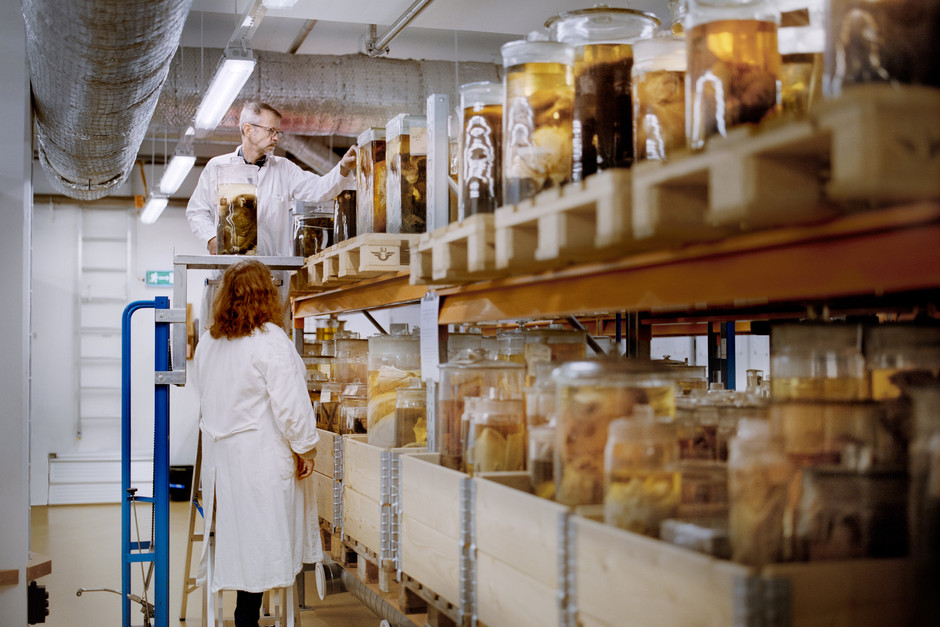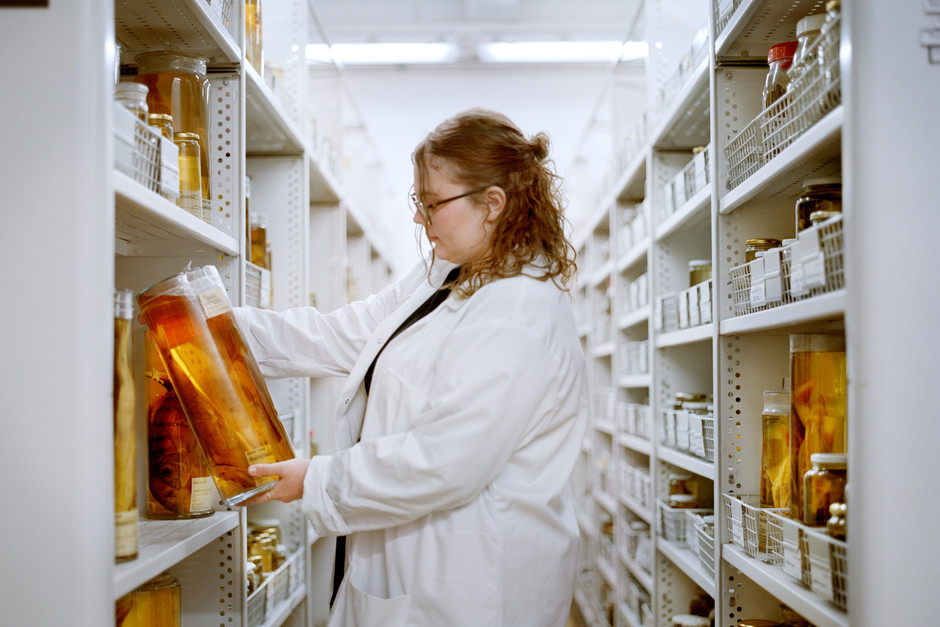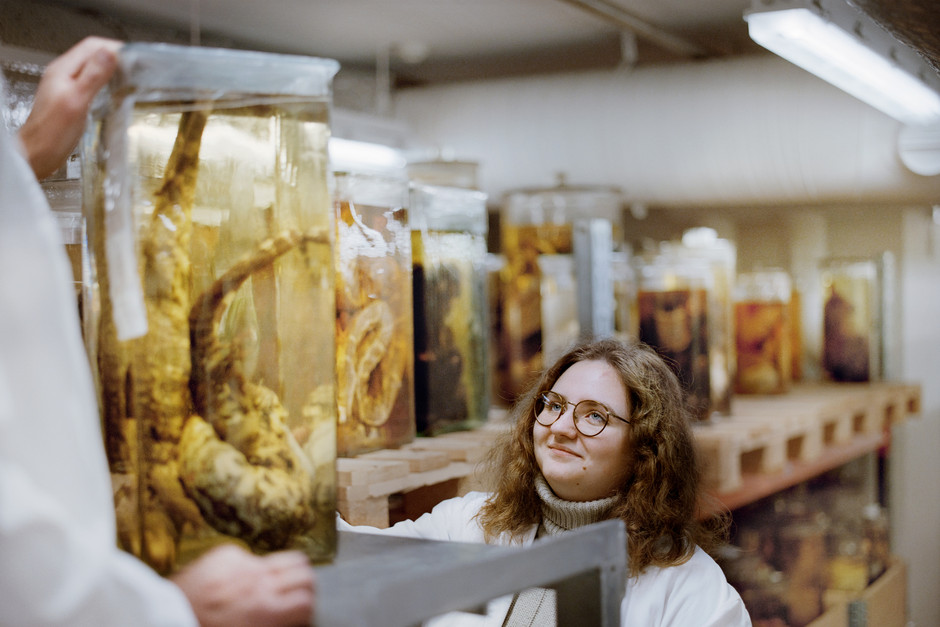About the collection
The Swedish Museum of Natural History has underground premises for the storage of alcohol-preserved collections.
The facility mainly stores collections of animals. Alcohol-preserved plants make up about five percent. The zoological collections, i.e. the animals, consist mostly of vertebrates in terms of space occupied, with fish dominating followed by herptiles, mammals and birds.

However, there are many more invertebrates in the wet collection where crustaceans, echinoderms and mollusks are examples of large groups with many samples and individual specimens. The Insect collection which to a large degree consists of dry-pinned specimens also has a substantial proportion of material stored in alcohol.
Large facility
The total area is about 1,000 square meters and includes a compactor system with 7,000 shelf meters and 150 meters of pallet racks for Euro pallets. The latter are used for storing large cans, barrels and containers.

The facility was built and put into use in the ’90s to collect all flammable alcohol material in a hall with modern safety systems such as sprinklers and gas detectors that warn against high concentrations of alcohol vapors in the air.
FAQ
What kind of alcohol is used?
Ethanol, usually 70-80%.
What is the purpose of saving items in alcohol?
The objects are preserved very well. The oldest alcohol-preserved objects are from the first half of the 18th century. Another advantage is that the whole animal can be preserved, unlike, for example, preparations of dry skins or skeletons which only preserves parts of the animal.
Can you eat the animals?
No.
Contact information
Head of the Wet Collection:


